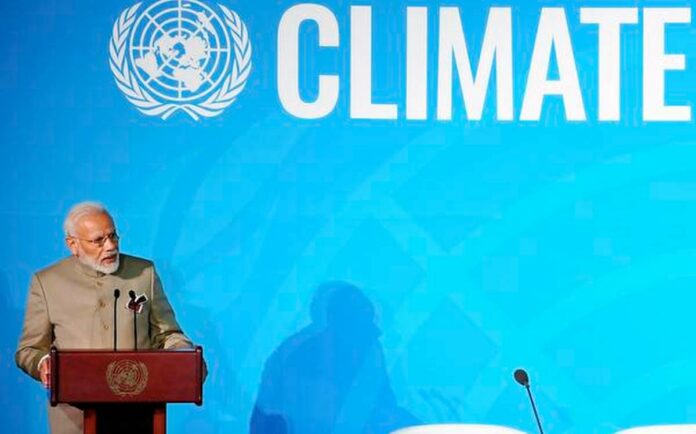At Glasgow, Prime Minister Narendra Modi quoted, “By 2070 India will achieve the target of net-zero emissions”.
PM listed a five-point plan to put India on the pathway to net zero.
- By 2030, India will increase its non-fossil fuel energy capacity to 500 gigawatts.
- It will transition to 50 per cent renewable energy sources.
- It will reduce projecting carbon emissions by 1 billion tons.
- It will reduce the economy’s carbon intensity by 45 %.
- It will reach carbon net-zero by 2070.
In 1970, nobody could have ever predicted the transition India has achieved now. So there is an optimism that India could achieve its goals before 2070.
The commitment to end greenhouse gas emissions is a big step forward in India’s ambitions on climate change.
This is a very promising step because what climate scientists have shown very clearly I that for the world to keep temperatures at 1.5 degrees Celsius by the end of the century, something they pledged to do in the Paris agreement six years ago, then the world needs to level out its carbon dioxide emissions by 2050 and its greenhouse gas by 2070.
If Narendra Modi made it clear about carbon dioxide emissions by 2050, we could have concluded that his targets are consistent with the Paris agreement.
The targets of 2030 are much more important if India wants to build up that much renewable energy to cut its carbon dioxide emissions.
World leaders promised many things at these climate change conferences but failed to do so.
For example: In 2009, at the Copenhagen summit, rich countries promised poorer ones 100 billion US dollars a year in climate finance to help them green their economies and to help them adapt to the effects of climate change. But that never came through.
In India, coal is an ecosystem. For many workers in the east, it is the only source of income.
Coal plays a vital role in India’s economy powering 75 % of its electricity generation. While the country has made progress in developing renewables, it says it needs coal to meet its vast energy requirements and is planning to open more plants.
There is tension between emerging economies and developed countries.
Even though big countries like China and India are big emitters today, the developed countries have a historical carbon debt.
We have a climate emergency need more ambitious targets.
Follow and connect with us on Facebook, LinkedIn & Twitter

